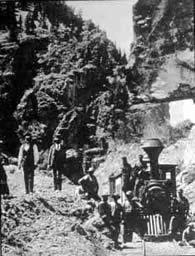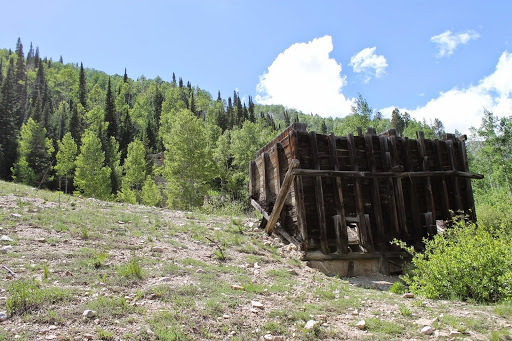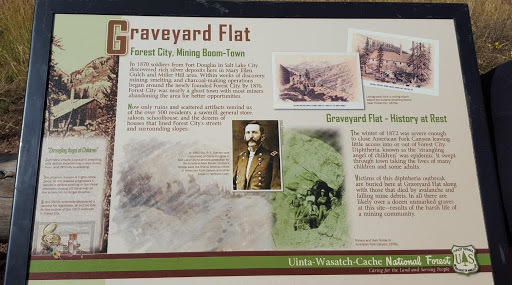Forest City

Several miles up a dirt road in American Fork Canyon you can find a former mining town with an interesting history.
Soon after silver was found in Little Cottonwood Canyon, east of Salt Lake City, Utah, in the 1860s, prospectors looked to American Fork Canyon, the neighboring canyon south, for valuable ores. The American Fork Mining district was quickly formed in 1870 and the Pittsburg Mine just south of Alta and over the ridge into the American Fork Canyon drainage was the first of the many mines to come. Among prospectors of the new American Fork mining district were Jacob and William Millar who discovered lead carbonate ore bearing some gold. They started a mining camp and later sold what would become known as the Miller Hill Mine to the Aspinwall Steamship company based in New York.
To boost production, the Aspinwall Steamship Company built the Sultana Smelter close to the Miller mine. A mining town known as Forest City grew up around the smelter. Estimates of the population are hard to pin down. The highest estimates say that the peak population was around 2000-3000 people, but other sources limit the population to about 500 or less. Even though the exact numbers of the population are unclear, Forest City was much more than a large mining camp. There were enough children that the school district built a schoolhouse and brought in a teacher from Salt Lake. There was a sawmill that was used to produce lumber for building and an industrious farmer started a up a dairy farm to provide goods for the miners.
When the Sultana Smelter began producing more than could be transported down the mountain, the Aspinwall Steamship Company started building the American Fork Railroad to transport the ore that was produced in Forest City. The road was graded all the way up to Forest city, but due to excessively steep grades, the railroad shopped short at Deer Creek. The ore was brought by wagon from Forest City to Deer Creek and the train was able to coast down the mountain until the mouth of the Canyon. An resulting town that grew at the Deer Creek rail terminus is now submerged under the Tibble Fork Reservoir.
A bad winter in 1872 stopped production in the mine and a diphtheria outbreak killed several Forest City residents, including children. The Miller Hill Mine slowed after that. While there were other good veins found, the rugged terrain made accessing them difficult. Decreased mining led to profit loss for the railway, so the company began offering rail services to day trip tourists in 1878. Eventually the American Fork Railroad closed, making it the first railroad in in Utah to go out of business.
Without the railway operating, Forest City collapsed and most residents left by the early-1880s. Small mining excavations occurred in American Fork canyon up until the 1950s, including Tyng’s camp and others, but none of those competed with the peak production years of 1870-1876.
The graveyard where those that died of diphtheria were buried was preserved for a long time under the new name “Graveyard Flats” but with heavy winters up American Fork Canyon with snowpack easily reaching 6 feet or more, the site has been lost. What was left of Forest City was destroyed with the actions of snowmobilers who didn’t know they were driving over a snow covered ghost town. Today all that stands of the old town are the remains of the old Sultana Smelter.
Images



